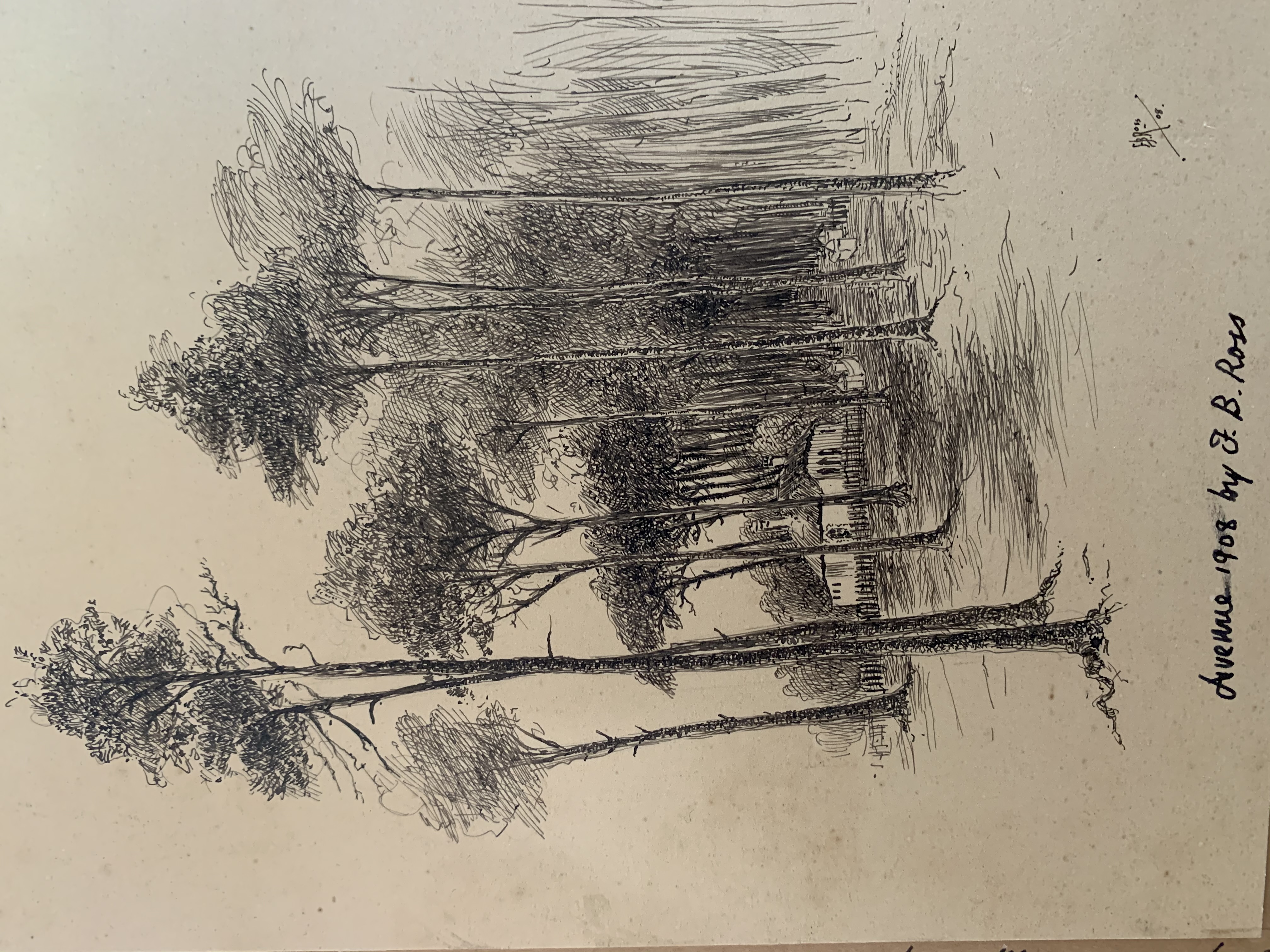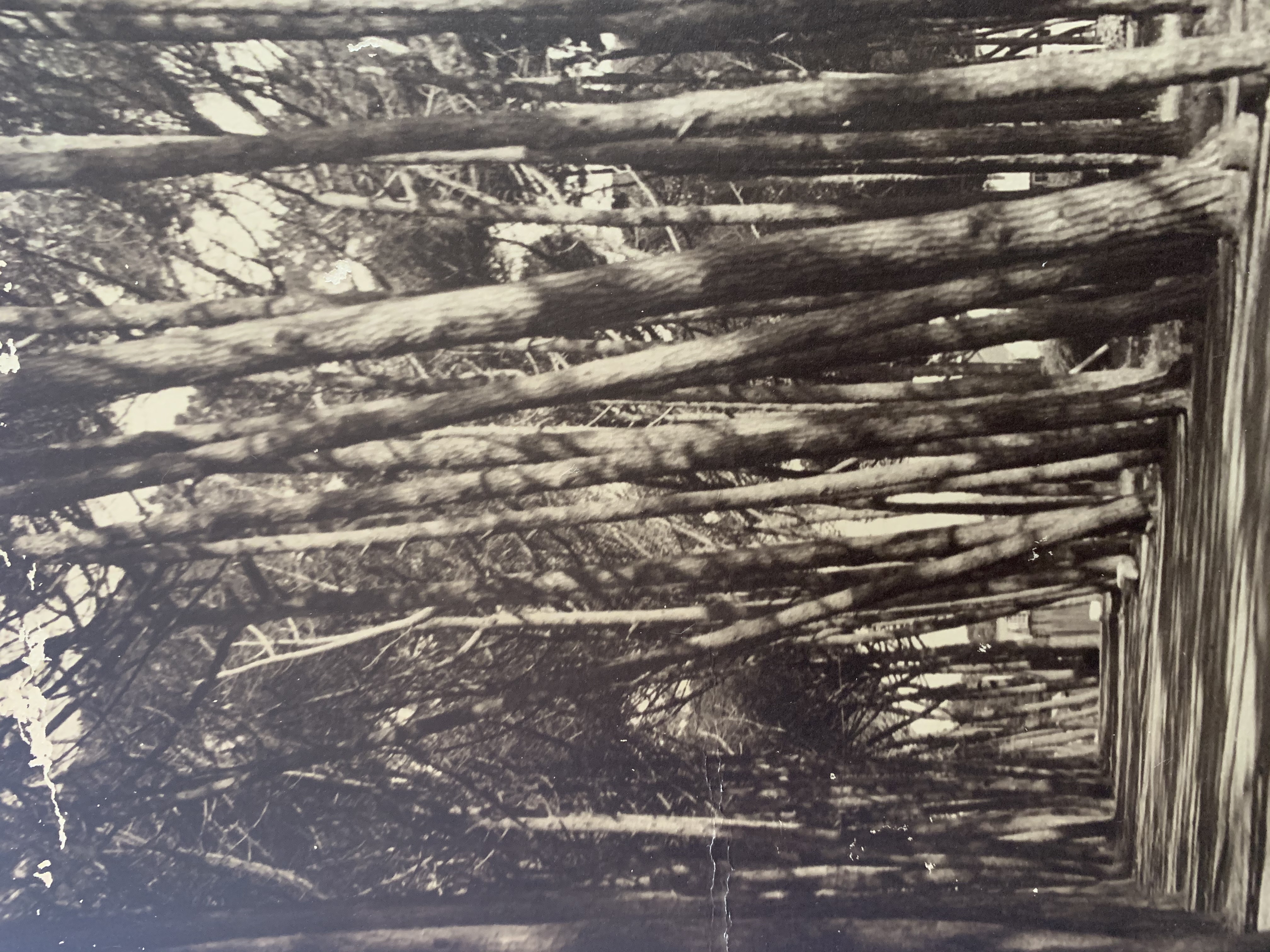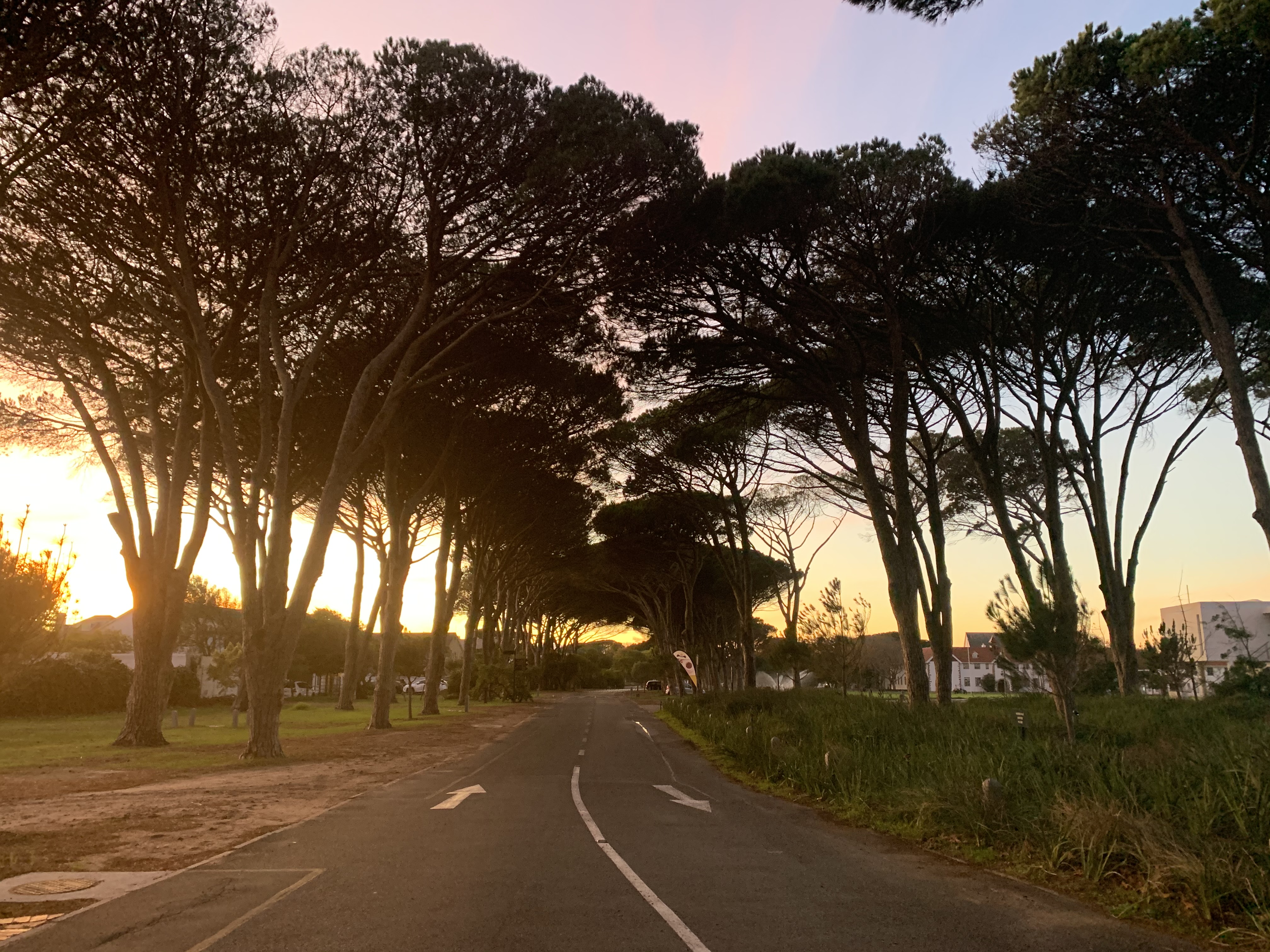The Bishops’ Avenue - a short account by Paul Murray.

Etching above - by Frederick Ross of the Avenue in 1908.
The Avenue at Bishops is enshrined in the school's history.
The farm’s original name is Woodlands which also happens to be the name given to the new Astro when it was built.
According to John Gardener’s ‘Bishops 150’, the first freehold grant for the land was in 1791 to Frederic Peens. But this was a small-holding that lay more towards where the Frank Reid and Oaks Fields are today, bordering on the Black River Tributary (on Sandown Rd). Then in 1807 C. J. Gie purchased the land from Peens and acquired some extra land where the Piley Rees is today. He had it for a short time after which he sold it to C. McLean with buildings on.
The buildings on the estate, at the time, seem to have consisted of ‘The Cottage’ which was the Woodlands Cottage where Founders is today which most likely was the owner’s home. Then there was a second residence built later, which became known as the Old Cottage (on the site where the San is today). Then on 11 November the Woodlands Cottage was destroyed in a fire, so the proprietor of the whole estate moved into the ‘The Old Cottage’. He was E.C. Morgan who when he died in 1847, left an estate that was insolvent.
Bishop Gray purchased the farm in September 1849. It is to these premises that Bishops moved in January 1850 after having been established in Maynier’s Cottage at Bishopscourt on 15 March 1849.
Right from the start the estate was heavily wooded. Hence the name, Woodlands. But it was only in 1846 that the first avenue of firs (pines) was planted, by Hamilton Ross. So as Bishops students entered the school for the first time in 1850, the trees just inside the gate (where the entrance on Campground Road is today, where ‘The Lodge’ is) were ‘about shoulder high (and) we had to crouch down for hiding purposes when bolting through them’ … so low were they still. The Avenue in those days stretched right across from Campground to Riverton Road.
From then on, the Avenue which grew tall from its trees, has remained a principal feature of the school. One of the descendants of the Mr Ross who planted the trees, was one of Bishops’ first students, he was Dr W. H. Ross His son Frank B. Ross made a sketch of the first Pines in 1908 when, by then, they were standing tall … hence ‘firs’ (see the sketc, above). Dr Ross reports that it was a tradition that seniors moved from one side of the farm, to the other, climbing through the branches.
But then something suddenly happened.
Donald McIntyre’s ‘A Century of Bishops’ describes that on the night of 30 June 1943 as the Rev. Canon Harold Birt handed on the torch (Principalship) to Mr Hubert Kidd, a great gale raged which uprooted the stone pines that lined the Avenue (see the photograph).
At the time Mr Tony Van Ryneveld (OD) was alive, he shared his personal recollection of that moment. ‘Came that fateful night – 30 June 1943 – when a powerful stormy northwester came through in full force. My parents’ home was the double story thatch-roofed house, known to many school boarders as well, right on the school boundary near the Avenue. It was night-time, but I can remember well how, with great concern, we heard the sound of tree after tree crashing down in the storm, fortunately falling away from our house. I think that 93 of them fell that night, wrecking the old Avenue as it had been known. Those pine trees were old, and their roots were very shallow, limited in depth by the ironstone layer less than a metre below the ground level. Coincidently, it was the date of changing of the guard, the last day of Canon Birt as Principal, with Kidd to take over on 1st July 1943. It might have seemed a bad omen, but history showed that to be unjustified.’
The current pines were planted soon after, and to this day they line the avenue as those that came crashing down, did before.
Today we see the third generation of pines being planted so as to ensure the Avenue remains. Bishops’s Avenue remains a hallmark in the area. Looking down from the mountain, over Rondebosch, one can see the line of trees that make up the Avenue, as one enters the Bishops estate.

Photo above - By Ackersdyk, donated by Tracey Richie - OD. The photograph is of the 1920s

The Avenue in the first half of the C20. The photograph is by D. Reid.

The above photograph of the Avenue was taken on Monday 4 May 2020.
